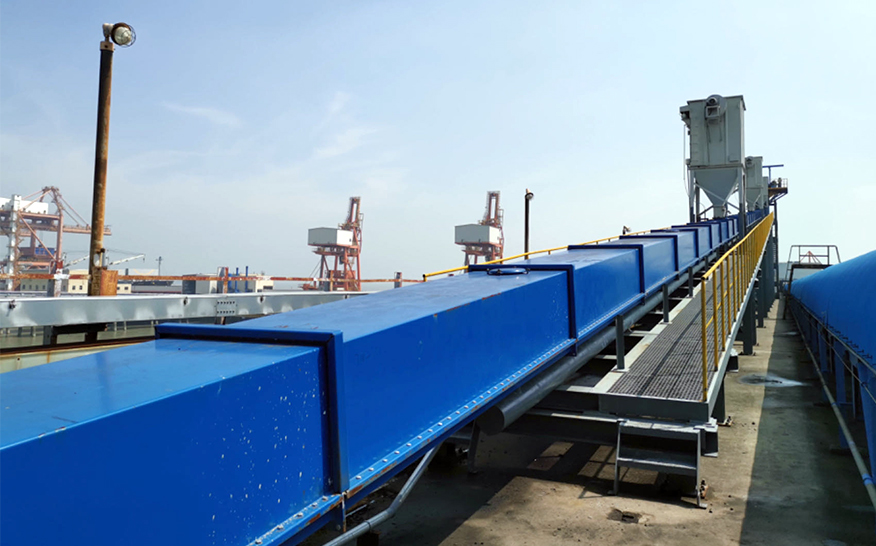
Air Slide Conveyor Practical Guide: Selection Strategies, Common Issues, and Solutions
In the field of industrial powder handling, failures in air slide conveyors often bring entire production lines to a halt. Such cases are unfortunately common in the powder industry. This article explores the real-world challenges of air slide conveyors and provides proven solutions.
Precise Selection: Preventing Problems at the Source
Incorrect selection is the root cause of most issues. When choosing an air slide conveyor, you must consider these key factors:
Material Characteristics Dictate Design
First, materials with moisture content exceeding 3% are generally unsuitable for standard air slides. A fertilizer plant learned this the hard way; they ignored their raw material’s hygroscopicity, resulting in weekly shutdowns for cleaning. They ultimately solved the problem by switching to a specialized porous media and adding a hot air system.
Pay Close Attention to System Layout
Furthermore, for conveying distances exceeding 60 meters, a segmented air supply design is recommended. A large cement plant successfully implemented this, using four independent air chambers on an 80-meter conveyor for stable operation. Also, always ensure the conveyor slope is between 4-6 degrees, as insufficient angle will cause material buildup.
Carefully Consider Environmental Factors
In northern climates, winter insulation is absolutely essential. One power plant neglected this, leading to fly ash condensation and hardening inside the conveyor, which forced a complete system replacement.
Diagnosing and Resolving Common Failures
Addressing Blockages with a Tiered Approach
For mild clogs (efficiency reduction under 30%), adjusting the air source pressure often suffices. Moderate blockages require inspecting the porous media condition. An aluminum plant, for instance, reduced failure rates by 70% by regularly monitoring the media’s pressure differential. Severe clogging typically demands system modifications.
Systematically Troubleshooting Insufficient Capacity
First, verify the air supply system meets design parameters. One cement plant experienced this when an undersized blower limited their air slide conveyor’s capacity to just 60% of design. Next, check the porous media for aging, and finally, confirm the material characteristics haven’t changed.
Proactively Preventing Abnormal Wear
When handling highly abrasive materials, we recommend using ceramic porous media. A mineral powder production line extended its media service life from 6 months to 3 years after this switch. Additionally, regularly inspecting the feed inlet’s buffer device is crucial.
Strategies for Special Operating Conditions
Developing Solutions for High-Temperature Materials
For material temperatures exceeding 200°C, you need heat-resistant porous media and special sealing materials. The key to an alumina plant’s success with 300°C operations lay in using segmented expansion joints and special-grade steel.
Meeting Specific Requirements for Explosive Environments
In potentially explosive atmospheres, air slides require anti-static porous media and pressure relief devices. One pharmaceutical plant successfully achieved ATEX certification through comprehensive explosion-proof design.
Implementing Paths to Food and Pharmaceutical Grade
Achieving food-grade standards necessitates using FDA-approved porous media and sanitary design principles. A starch manufacturer perfectly met GMP requirements by adopting an all-stainless-steel construction and quick-release connections.
Practical Tips for Performance Optimization
Implement Specific Energy-Saving Measures
By adopting a variable frequency drive (VFD) controlled air system, one cement plant reduced electricity consumption by 35% at the same output. Maintaining system airtightness, with an air leakage rate below 3%, is also key to energy savings.
Execute Strategies to Extend Service Life
Perform regular air pathway cleaning and inspect the porous media condition every three months. A major power plant achieved a five-year record without major overhaul by establishing a comprehensive maintenance archive.
Apply Innovative Smart Monitoring Solutions
Install pressure sensors and flow meters to monitor the conveyor’s status in real-time. A modern chemical plant leverages big data analysis to enable fault prediction and predictive maintenance.
Practical Q&A
Q: How do I determine if the porous media needs replacement?
A: When you need to increase the working pressure by 15% to maintain original capacity, or if you observe significant output unevenness, you should immediately inspect the media. One company accurately determines replacement timing by regularly recording the pressure-capacity curve.
Q: How should I handle sudden fluctuations in conveyor capacity?
A: First, check the stability of the air supply. Then, verify if the material characteristics have changed. A chemical plant traced capacity fluctuations to variations in raw material batches and resolved it by adjusting air supply parameters.
Q: How should I design an air slide system for space-constrained sites?
A: Consider multi-stage series connection or special cross-section designs. In one retrofit project, using a rectangular cross-section air slide saved 30% space at the same slope angle.
Conclusion
Successful air slide application stems from meticulous attention to detail. Establish a complete operational archive, record every failure and solution, and continuously optimize system parameters. Choosing an experienced supplier is equally vital, as they provide reliable technical support and proven solutions. Remember, prevention is always more cost-effective than repair. System reliability is built upon every single detail.


